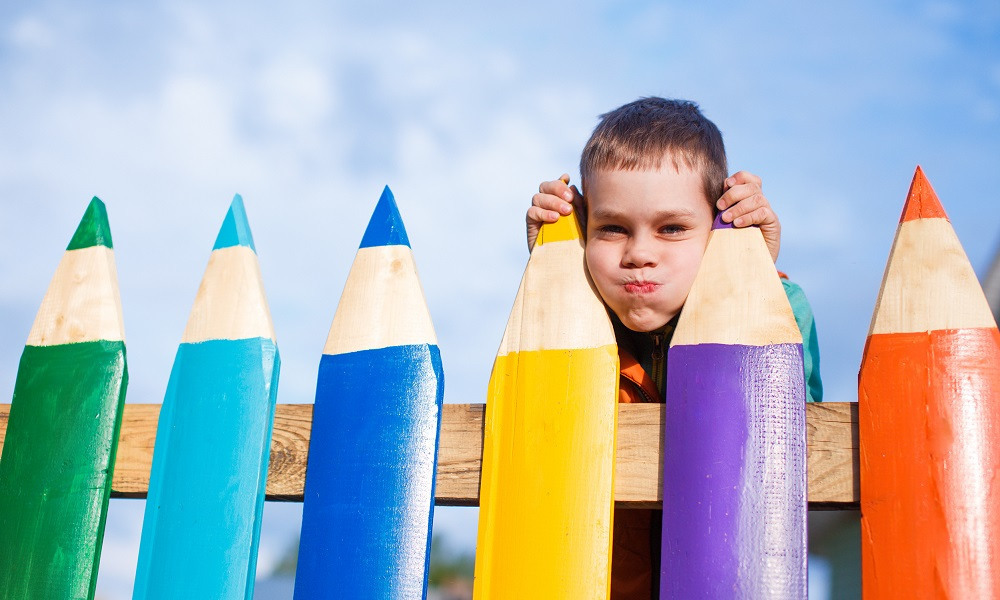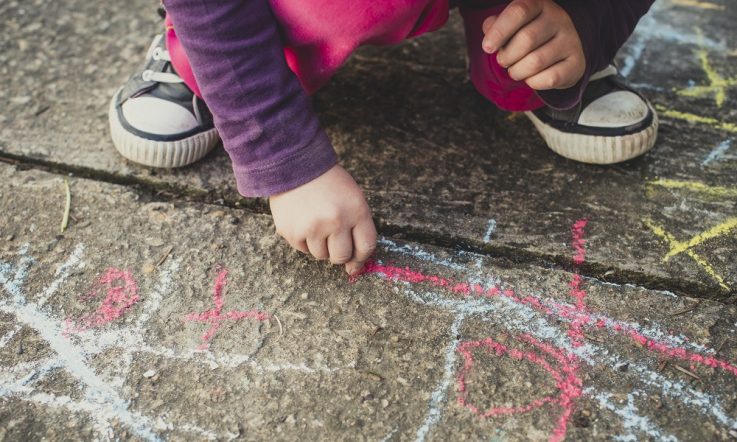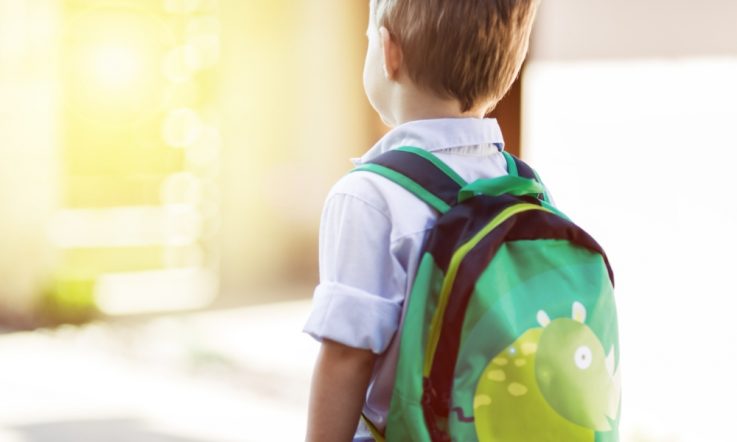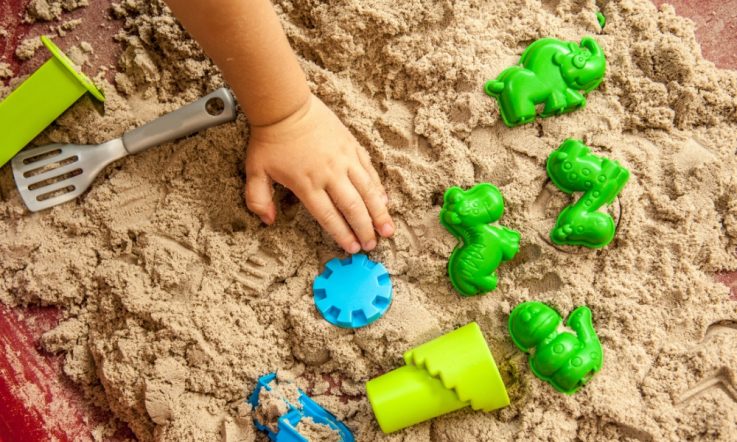This podcast from Teacher magazine is supported by EnhanceTV. EnhanceTV is used in thousands of Australian classrooms to stream educational videos that engage students. EnhanceTV is a not-for-profit, which means more value to educators. EnhanceTV is completely free to K-12 teachers – for more information visit enhancetv.com.au/free
Hello, thank you for downloading this podcast from Teacher magazine – I'm Rebecca Vukovic.
My guest today is Associate Professor Lynn Barnett-Morris from the University of Illinois at Urbana-Champaign. For the last three years she's been researching Kindergarten-aged children to determine how playfulness in the classroom is viewed by the children themselves, their classmates and their teachers. The result – a longitudinal study titled The education of playful boys: class clowns in the classroom. She joins The Research Files today, on a bit of a scratchy line from the US, to discuss the key findings, but to kick things off, I ask Lynn to tell listeners why she decided to conduct this research in the first place.
Lynn Barnett-Morris: I've been researching young children, preschool children up to Kindergarten children (as have many others) for quite a while in terms of how their playful expression and individuality shows itself. And one of the interesting questions that I've had for quite a while is what happens when the environment changes? So, when the kids are two, three, four, even up to five years of age, they're very playful and they're in fairly loose settings and very flexible expectations, if any, and they're kind of expected to do their own thing and nobody worries too much about it, as long as they're relatively safe.
The question I thought that was of interest was to look at the increasing degrees of structure; so, as the environment gets more restrictive, what happens to playfulness with children? And the formal school setting was the perfect place to look at that. So as children start out in Kindergarten, at least in the States it is, it's pretty open and fluid, when they start First Grade things changed fairly dramatically. They're sitting at individual desks and there's teachers and curricula, and more interestingly for us, very strict behaviour expectations and expectancies for the kids, not just in the academics but more in terms of how to behave in the classroom. So that was the perfect way to look at our questions about playfulness. Nobody had done any research on children older than Kindergarten – so that was another big interest, to extend those findings and see how they might change as children got older and a little bit more developmentally mature. And those were the two big issues that we were trying to explore with this study.
Rebecca Vukovic: How did you go about conducting this research?
LBM: We had a wonderful opportunity to do more longitudinal research, where we started out with the children in Kindergarten and we assessed their playfulness – there are a variety of ways of doing that and we have some valid ways of doing it. And then to follow those same children through First and Second and Third Grade. And we had the opportunity to be able to talk to their teachers, to get individual assessments of the children. We also had the wonderful opportunity to be able to talk to classmates about other children, given all of the very strict requirements that we followed to the letter about anonymity of the kids and confidentiality of the assessments. So we did all of that, but it gave us some great insights that we were looking for about children's behaviours in the classroom.
So we wanted to see if playfulness in Kindergarten had any predictive ability to talk about how the children would be in First, Second and Third Grades, both in terms of teacher's perspectives and in terms of their classmates' perspectives. And so that was what we were able to do.
We had assessments of their social behaviour: how socially competent the teachers thought they were, and how they viewed themselves, and how their peers viewed them, in terms of their social status. Were they desired playmates? Were they children that their peers wanted to interact with on a regular basis and to befriend? We also had measures of the extent to which their behaviours could be viewed as disruptive to the classroom – from the teachers' perspective, from their classmates' perspective, and also from their own perspectives. And then we had an assessment again from those three different perspectives of the extent to which a child could be considered to be the ‘class clown'.
It was those different types of measures that we were hoping would converge and tell us a story about playful children and how they would be perceived and whether those perceptions might be different, depending on whether we are talking to teachers or other children their age, or from their own point of view.
RV: And Lynn could you share with listeners some of the findings, some of the key things you found through this research?
LBM: So first of all, playfulness was viewed very differently for boys and girls by teachers, but not by any of the children in self-perceptions or peers regarding them. They regarded boys and girls in the same way if they were playful and also if they were not playful. And it was the teachers that showed, even in First Grade, that they saw playful boys very different than playful girls, and non-playful boys different than non-playful girls. So, big gender effects, which was thoroughly consistent with some of the literature on gender differences.
I should say at this point also that all the teachers were female. So it does make a difference in terms of the literature, whether you're talking about male teachers interacting with same or different sex kids or female teachers. These were all female teachers.
And then we found that things changed across the years. So right from the get go, teachers perceived playful boys very, very negatively. They saw them as having very low social skills (lower than anybody else) they saw them as the most disruptive to the classroom, in need of attention from the teacher almost constantly which then interrupted her ability to teach and to work with the other children, and they were regarded as a huge problem that had to be managed in some way.
Playful girls – teachers thought they were no problem at all, they saw them as having high social skills, the same as non-playful girls, they saw them as not being disruptive to the classroom, they reported having wonderful relationships with them and enjoying having them as part of their everyday classroom, and that they contributed to the classroom rather than detracted from it. So it was that one group of playful boys that were the subject of scorn, in terms of the teachers.
Other kids saw the playful children, again they didn't see differences between boys and girls, and in First and Second grade they said, ‘oh they were desired playmates, we enjoy their company, they were fun to have around, we would nominate them to be best friends'. They enjoyed having them in the classroom as well as outside the classroom, they wanted to get together with them. They weren't necessarily labelled class clowns and it was so different to what the teachers had said.
The kids themselves said no, they had great social skills and they weren't disruptive and they saw themselves very positively, having lots of friends and enjoying going to school and being in the classroom. And they showed more of a reluctance than the other kids did in terms of labelling themselves as ‘class clown', and it could be labelling in general – we just looked at that one label, I'm not sure.
By Third Grade, things changed very dramatically for the kids. And that was the peers, the classmates of the playful children, started viewing themselves very negatively, and any kids who were high in playfulness were negative in terms of being disruptive. They were problems, they interfered with learning, they could tell the teachers didn't like them and they now were calling them class clowns and using it in a negative, more of a derogatory way.
The kids themselves also picked up on that. They were seeing themselves as having poor social skills, when they thought for the two years proceeding that they were pretty high. They saw that they were losing their friends, that school wasn't a fun place to go anymore and in fact they couldn't wait until they got out. Their relationship with the teacher was pretty negative and they were still reluctant to call themselves class clowns, but a little bit more ready to do so.
So there was this jump with the children themselves, both in terms of rating themselves and rating the other kids in their classroom, everything was going along fine in First and Second Grade, and then the jump from Second to Third grade produced some staggering results that changed direction fairly precipitously.
RV: And I want to talk a little more about labels because the report notes that labels can have a powerful effect on the behaviour and socialisation of children. So, in what ways do labels impact on the behaviours of children?
LBM: There's this interesting phenomenon. As I started to try and do some research on the whole labelling issue, and what is it about labels and what type of labels that occur, particularly in interactions with teachers and children. And I found this phenomenon which I thought was really interesting and seems to apply to this data as well and it's called ‘the Pygmalion effect' (after the famous story), that you can sculpt or create a child in the likeness that you desire. And it's used in the educational literature almost exclusively, I didn't find it anywhere else and I searched for it. And it says that teachers have certain expectations of children and a lot of it is based on children's behaviours, both positive and negative. It's not just the positive ones that are getting attention like in the wonderful movie and story, but it's the negative ones that are shown in the classrooms that are of concern. And what happens is they have these expectations, and they may be completely inaccurate, but their perceptions dictate the expectations that they're going to have. And then through their actions, they shape the behaviour of the children and you reward the positives of course as we know, and you try to extinguish the negatives. And over time they do that and so the children learn very quickly how to conform to those expectations. They then act so as to fit the expectations. In that way, they get very close to what those perceptions were that were held of them. Again, whether they were initially accurate or not, but they now become very accurate.
And so teachers have a very big socialising effect, particularly in the classroom, from that research that was done and it's been shown that even if their views of children are not accurate at all, that in fact the children, depending on what the behaviour is, but it could be in a relatively short amount of time, actually come to fit when they didn't initially. And it's been observed in a number of situations and, for me, it was pretty staggering because I hadn't been aware that it was so strong (these effects) and consistent. And they are.
I think we found evidence for them in our study looking at playfulness and class clown behaviour and disruption. It seemed to fit our data pretty well and we have from this rather unique perspective of looking at class clowning and playfulness which hadn't been done before, which we have yet further evidence to support the whole idea that there is this Pygmalion effect, this self-fulfilling prophecy that occurs in the classrooms with teachers and their students.
RV: Lynn how do these findings enlighten our understanding of playfulness in children?
LBM: We think that we've taken some jumps to contribute to the literature in a variety of ways. First we've extended playfulness looking at older children and shown that it does exist with older children. The biggest finding was that it does exist but that it has negative consequences. And nobody really talked about the negatives of it before, it was just this wonderful, adorable little characteristic, cute little cherubic children. When you look at it though in terms of a formal setting, highly structured rule-governed setting, playfulness is a very negative attribute because it incurs the negative behaviours and verbalisations and general attitudes of, in our case, the teachers. It's also done with administrators, we found that principals weren't very happy as well. That's not reported in here but that's in a later study. We learned that playfulness therefore has this negative valence for when you start the formal school grades.
We also learned some things about how playfulness, the trajectory that it has through three years, actually through four years – going from Kindergarten to First, First to Second, Second to Third, and we went through the end of Third Grade – so just before they had started Fourth Grade. But there is a trajectory and things get incredibly negative. As the classroom itself gets more structured and more formal. If you're a boy and you're playful, you are at a serious disadvantage of incurring labels, and being almost isolated or ignored maybe or ostracised by other kids because in Third Grade they didn't want you to be friends anymore, whereas the children were well liked before that. So there are big consequences to being playful – it may take a couple of years for them to be realised and we don't know what's going to continue but I would venture to guess that it's going to get worse and worse as you get to Fourth and Fifth and Sixth Grade, if that playfulness hasn't been extinguished by then.
RV: Just finally, what implication does this research have for teachers?
LBM: I think the strongest one I would like to offer is the powerful effect that teachers have through their words and their actions on children, that may be the focal child they're trying to address. And also they're being watched by the other children – so children imitate what they see. We found in First and Second Grade they had their own opinions but by Third Grade their opinions closely matched those of their teachers. So, they had been observing for quite a while how these playful boys were being treated by their teachers and they were adjusting their perceptions of their classmates, their playful male classmates so they matched their teachers.
So it's the powerful socialising effect, the fact that – and there is some literature on this as well that I was able to find – children take cues from their teachers about [the extent] to which their classmates should be liked or disliked. However it may be as subtly communicated, the kids are picking up on them and even at that young an age. Of course as kids get older and older they're much better at picking up social cues and they can be much more subtle and the kids are able to pick them up because their social cognitive abilities are much more enhanced, and so they're going to get it from their teachers pretty directly and probably in short order.
That's all for this episode – to keep listening or to download all of our podcasts for free, whether it's more from The Research Files or our series on Behaviour Management, School Improvement, Teaching Methods, Global Education or Action Research, just visit acer.ac/teacheritunes or soundcloud.com/teacher-ACER. The full transcript of this podcast is available at teachermagazine.com.au. That's where you'll also find the latest articles, videos and infographics for free.
This podcast from Teacher magazine is supported by EnhanceTV. EnhanceTV is used in thousands of Australian classrooms to stream educational videos that engage students. EnhanceTV is a not-for-profit, which means more value to educators. EnhanceTV is completely free to K-12 teachers – for more information visit enhancetv.com.au/free
This research shows that playful boys were negatively regarded as rebellious and were labelled as the ‘class clown’ by their teachers. Is this consistent with your own classroom setting?
In stark contrast, girls’ playfulness was not considered negative by either teachers or their peers. Why do you think this is the case? Brainstorm possible reasons why girls are not regarded as ‘class clowns’ regardless of their playfulness.



